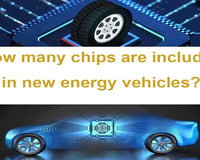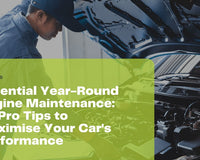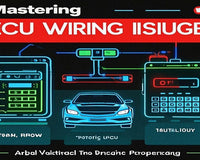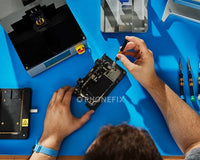If you’re like most people, you rely on your car every day. That keeping an eye on your car’s health can save you a lot of trouble down the road. By paying attention to your car’s behavior, you can catch small issues before they turn into major repairs. Recognizing warning signs early can prevent bigger problems and keep your car running smoothly.
Sometimes, your car gives subtle hints. It could be a noise you haven’t heard before, a change in how the car feels when you drive, or a smell that seems off. These are all signals that your car needs a check-up. Identifying warning signs that your car needs a check-up is essential for maintaining its health and performance. Here are some key indicators to look for:
1. Warning Lights on Dashboard
Pay close attention to your dashboard warning lights. Common indicators include the check engine light, battery light, oil pressure light, and tire pressure monitoring system light. Ignoring these lights can lead to more significant issues down the road. FNIRSI FD10 car depth scanner can 360° full vehicle depth scanning troubleshooting, plug to use, automatic connection.
2. Unusual Noises
Listen for any strange noises coming from your vehicle while driving. Sounds such as grinding, squealing, or knocking can indicate serious problems that require immediate attention.
3. Poor Performance
If you notice your vehicle is stalling, experiencing rough idling, or having difficulty starting, this could signify an underlying issue. Additionally, decreased fuel efficiency may also point to a need for service. Hantek 1008A Diagnostic Digital Oscilloscope for automotive performance testing.
4. Fluid Leaks
Check for any fluid spots where you park. This could indicate leaks of vital fluids including oil, coolant, or transmission fluid, which require prompt inspection and repair.
5. Vibration or Pulling
If your car vibrates or pulls to one side while driving, it could indicate alignment issues, tire problems, or issues with the brakes. These symptoms should not be ignored as they can compromise driving safety.
6. Smoke or Steam
If you see smoke or steam coming from under the hood, it is critical to stop driving immediately and investigate the cause. This can be a sign of overheating or other severe mechanical failures.
7. Changes in Braking Performance
If you notice that your brakes are less responsive or making unusual noises when applied, schedule a check-up as soon as possible. Healthy brakes are crucial for your safety. Car Brake Oil Connector Brake System Fluid Connector can effectively repair your car.
8. Worn Tires
Regularly inspecting tire condition is crucial. Worn or bald tires can affect traction, leading to unsafe driving conditions, particularly in wet weather.
9. Excessive Exhaust Smoke
Different colors of smoke can signal various issues. For instance, black smoke often indicates a rich fuel mixture, while blue smoke signifies your engine burning oil7. Thick white smoke may indicate coolant entering the engine, which can be a sign of more serious issues like a blown head gasket.
10. Pools of Fluid Under Your Vehicle
While some fluid collection can be normal (such as water from the air conditioning), unusual colors or a larger pool could indicate a problem. Common leaks include oil (dark brown to black) and coolant (green, orange, or pink) which may require immediate attention.
To ensure your car remains in optimal condition, it's crucial to recognize the warning signs that indicate it needs a check-up. Common indicators include warning lights on your dashboard, such as the check engine light, battery light, or tire pressure light. Additionally, symptoms like engine stalling, rough idling, strange noises, and reduced fuel efficiency are red flags. Regularly observing these signs can help in early diagnosis and prevent more serious issues from developing.









